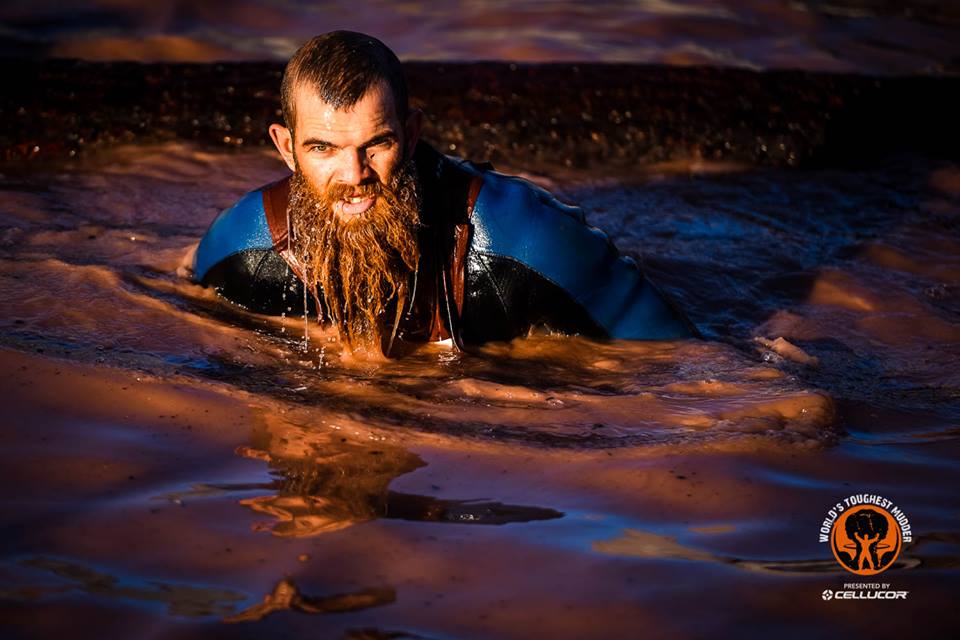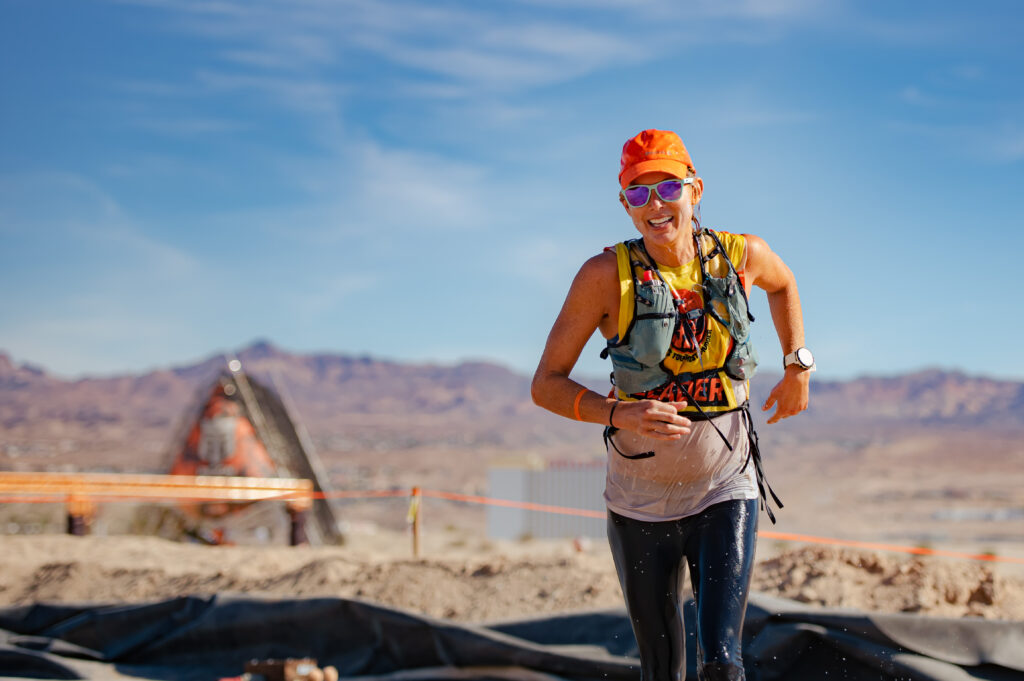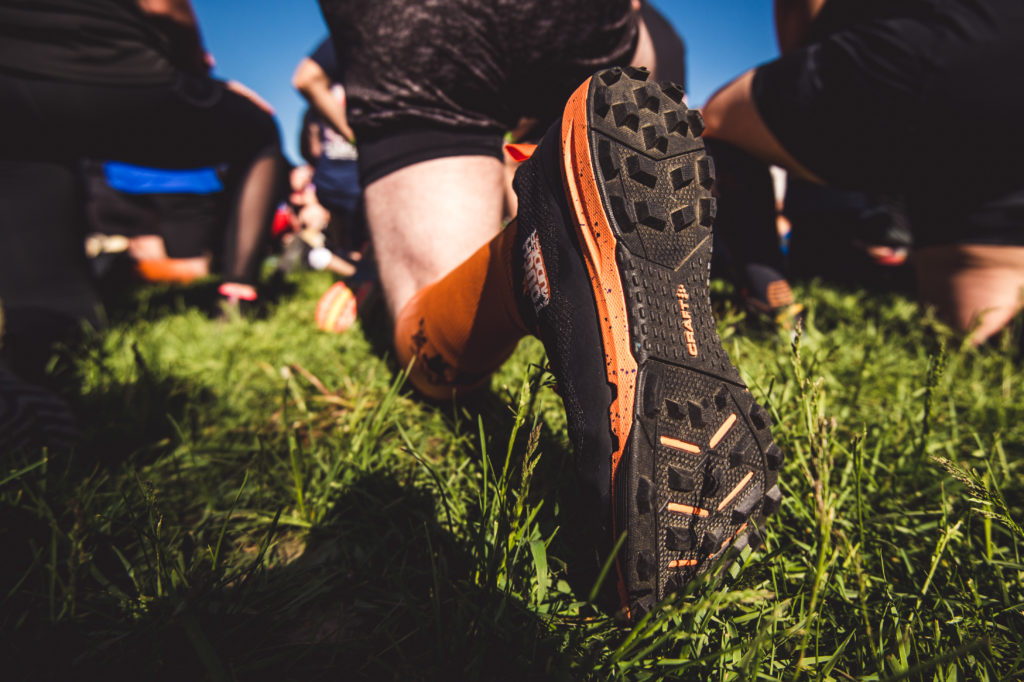Whether you’re gearing up for a Tougher Mudder or The World’s Toughest Mudder, those hours and minutes before the horn blares can jack your heartrate up higher than an 8am jump in the arctic enema would, even when you know you’re start-line ready. We tapped experts for tips that will help you de-stress at the start line, implement them to be as chill as your are tough on race-day.
Before Event Day

1. Develop a pre-event ritual
So many things are completely out of your control on race-day, from the weather and crowds, to your mood and relationship status, race day can be a bit of a crapshoot. That’s why having a pre-race ritual can help you stay focused and in control. But race week and race day isn’t the time to figure out pre-race rituals, pre-race rituals should be created in training so that if (and when) race-day nerves kick in (yes, even the toughest mudder gets nervous), you can ground yourself in the familiarity of what works for you. While your race-day ritual will likely develop organically, when and how you stretch, what you eat, how you prepare mentally, and how you piece the components together are all vital for race-day success.
Doctor of Physical Therapy and Certified Strength and Conditioning Coach Dr. Grayson Wickhman PT, DPT, CSCS, recommends figuring out your nutrition first. Begin by finding what fuel works for you the night before, the morning before, and after the race. Contrary to popular belief, “PASTA!” doesn’t work for everyone. Find simple foods that fuel you; you’ll know a food or meal works for your body if it leaves you energized and without any stomach distress. Once you find your meals, eat them on occasion throughout your training so that you don’t begin to second guess yourself as the race approaches. If you’ve never drank coffee before training, race day is not the time to guzzle some sugary caffeine drink (that is sure to send you straight to the porter potty).
You will figure out how to stretch on race day the same way: by trying different sequences until one works for you body. Some mudders prefer stagnant stretching while others prefer dynamic stretching, but most physical therapists, like Wickham recommend focusing on how you stretch before interval training because that is the stretching routine you should use on race day.
Once you figure out your pre-race fuel, and stretch-routine, figure out what’s important to you. For example, Is there a specific shirt color you like to wear? Is there a specific fabric that keeps your tough self from chafing? Experiment with different fabrics and cuts before race-week so you’re not trying out new styles the day of. For example, if you’ve been training in leggings, today is not the day to throw on a skort. If you haven’t run a practice race with a fanny-pack, today is not your day to add in the accessory (even if it makes your ass look nice).
2. Review Your Plan
The night before the race, review and implement your race-day plan: set your morning alarm, lay out your outfit, make sure you have the ingredients for breakfast, and double check the race start-time. Then, look over the obstacle race map, think about your strategy and pacing and envision yourself moving through the race. Wickham says, “Literally visualize yourself getting dirty. Think about the feeling of the mud on your legs. Get specific. Focus on the positive outcomes”. While visualizing yourself moving through the course should happen routinely throughout training, at the very least, do it the nght before.
Note however, that you should stop this visualizing two-hours prior to going to bed because it can trigger the sympathetic nervous system and make falling asleep more difficult, which as all mudders know can be extremely anxiety producing the night before a big race.
At The Start Line

3. Stretch
After you have warmed up, stretch lightly. Not only will stretching help prepare your muscles for the race ahead, it will also help you refocus your nervous energy towards preparing your body. However, do not implement a stretch that you was not part of your training. Wickham recommends a type of stretching calling “end range isometric concentration”, which is the type of stretching that occurs when an athlete extends their muscles (with zero joint movement or activation) and flexes, when the muscle is already contracted. Wickham says, “Passive stretching is okay, but it takes longer than this kind of stretching. We are weakest in these end-ranges of motions. This type of stretching makes us strong in a full range of motion, which can prevent injury by activating a full range of motion.”. An example of end-range isometric contraction stretching is a hamstring stretch that involves elevating your foot onto a fence or box, and straightening the leg until you feel a stretch. From there, Wickham says we need to contract hard for 20 seconds. In addition to warming us up more quickly than passive stretching, over time, this kind of stretching increases flexibility, primes the nervous system, and strengthens the joint, therefore helping to prevent the injury.
4. Yoga
Twisting yourself into a pretzel at the start line? No way. But sinking down into child’s pose (balasana) or standing forward fold (uttanasana)? Could be exactly what your body and mind need to chill. Both child’s pose and uttanasana are known for gently stretching your hips, thighs, and hamstrings while calming the brain and relieving stress. Keri Gans, M.S., R.D.N., certified yoga instructor and owner of Keri Gans Nutrition shared that, “Child’s pose is a resting posture that can help quiet the mind, ease stress, and gently stretch the body. It’s also good for the nervous system and lymphatic system because of its restorative nature”. If getting on your hands and knees at the start line makes you feel like a noob, try the standing forward bend, which is thought to relieve stress because of it reverses blood flow without requiring a lot of energy. Gans, emphasizes that race day is not the right time to bend and stretch in new ways. However, she says that “even 60 seconds of a familiar pose can be a great way to bring the body back to itself”.
5. Breathe
Breathing properly while running is important for staying calm and cramp-free, but breathing before a race is an excellent way to de-stress before the horn blares. There are a few different breathing methods that have been shown to reduce stress. Gans recommends a yoga breathing technique called samavritti, a breathing practice that emphasizes even inhalations and exhalations: inhale for two counts through your nose, and out two counts through your mouth. Meanwhile Dr. Wickham recommends deep diaphragmatic breathing, a breathing technique named for the useage of the diaphragm. This technique requires a very slow 4 second breathe- in through the nose, holding for 2 seconds in the stomach, and then exhaling for 8 exhales by bringing bellybutton back to core through the nose. Wickham explains that diaphragmatic breathing is effective because, “the diaphragm helps to down-regulate the sympathetic nervous system”.
Both of these techniques will help decrease your heart rate, so find which one is easiest for you to execute on race day. Gans says, “As soon as you feel your heart rate go up, come back to the breathe. You will be surprised how quickly counting your breaths helps you become present by clearing distractions”.
6. Meditate
It’s a myth that meditation only happens in dimly lit rooms with gongs, essential oils, incense and on a pillow cross-legged. Meditation can also happen in workout gear, Merrells, and minutes before you’re diving through a mud-pit. Even better, you don’t have to be a zen professional to reap the benefits of meditation at the start-line. Even one minute of meditation can lower your heart rate and increase your awareness of your body. Yogi’s know and science shows that meditating before ‘high risk’ situations can have noticeable effects. Which is why Gans recommends standing with your feed shoulder width apart, placing both hands on your belly, and keeping your eyes closed as you breathe in through your nose and out through your mouth. During this sixty seconds focus on your breathe; every time your mind starts to wander, bring the focus back to your breathe without punishment.
7. Embrace Your Nerves
We get anxious and nervous when we have to perform, which results in an increase of adrenalin- a hormone secreted during stressful times that is designed to give us an extra boost. Wickham explains that “In small doses, secreted at the right time, this can increase performance. But if there is a huge adrenaline dump, caused by nerves, it can actually decrease performance because it can cause you to go out too quick”. Before a race like a Tougher Mudder or Worlds Toughest Mudder, you are going to get some kind of adrenaline, the goal should be to realize what that feeling is and harness it to prevent yourself from going out hot-hot-hot, and doing yourself a disservice.
During The Event

8. Smile
Each time you smile you are telling your brain to feel good. The act of smiling activates neural messaging that benefit your health and happiness. Studies show that for one, smiling activates the release of neuropeptides that fight off stress. For two, the feel good neurotransmitters dopamine, endorphins and serotonin are all released when a smile flashes across your face as well.. This not only relaxes your body, but it can lower your heart rate and blood pressure. If you can feel yourself getting nervous before a particular event, for example, if you’re afraid of heights and Everest 2.0 event is coming or you hate swimming and The Arctic Enema is up next, force yourself to smile. It may not make you look like “tough”, but you’ll be tricking your body into relaxing.
9. Create a Mantra
Gans recommends creating a mantra, which is a positive or word or phrase that you can repeat to yourself as you run. While Gans recommends finding a mantra that has worked well for you during training, a phrase such as “I’m okay”, “You got this”, “One foot at a time”, or “Yes I can” can help rid the brain of negativity and replace it with feelings of self-assurance. Gans points out, “mantras are incredibly individual. What works for me might not work for you, but every mantra has the same purpose: to bring you back to yourself”. Perhaps for mantra such as, “you are tough”, “you are the tougher”, “you are tougher than you realize” will help re-center you and prepare you for the every obstacle and mile of your mud-run.



